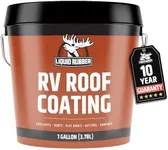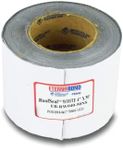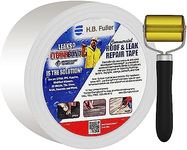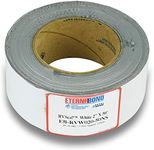Buying Guide for the Best Camper Roof Sealer
Choosing the right camper roof sealer is important to protect your RV or camper from leaks, water damage, and the elements. A good sealer will help maintain the integrity of your roof, extend its lifespan, and keep your interior dry and comfortable. When shopping for a roof sealer, it's important to understand the different types and features so you can select the best one for your specific roof material and climate conditions.Type of SealerThe type of sealer refers to the chemical composition and form of the product, such as liquid, tape, or spray. Common types include silicone, acrylic, polyurethane, and rubber-based sealers. This is important because different roof materials (like rubber, metal, or fiberglass) may require specific types of sealers for proper adhesion and durability. Liquid sealers are great for covering large areas, while tapes are useful for seams and small repairs. To pick the right one, check your roof material and the kind of repair or maintenance you need—use a compatible sealer for the best results.
UV ResistanceUV resistance indicates how well the sealer can withstand exposure to sunlight without breaking down or losing effectiveness. This is crucial because roofs are constantly exposed to the sun, and a sealer that degrades quickly will need frequent reapplication. Sealers with high UV resistance are best for campers used in sunny or hot climates, while moderate resistance may be sufficient for those stored indoors or used in milder weather. Consider your typical camping environment to decide how much UV protection you need.
Flexibility and ExpansionFlexibility refers to the sealer’s ability to expand and contract with temperature changes and movement of the camper. This is important because roofs can shift and flex as you drive or as the weather changes, and a rigid sealer may crack or peel. Sealers with high flexibility are ideal for areas with wide temperature swings or for roofs that experience a lot of movement. If your camper is often on the road or exposed to varying climates, prioritize a flexible sealer.
Waterproofing AbilityWaterproofing ability describes how well the sealer prevents water from penetrating the roof. This is the main function of a roof sealer, so it’s essential to choose one that forms a strong, watertight barrier. Some sealers are designed for heavy rain and standing water, while others are better for light moisture. If you camp in rainy regions or want maximum protection, look for a sealer with excellent waterproofing properties.
Application MethodThe application method refers to how the sealer is applied—by brush, roller, spray, or as a peel-and-stick tape. This matters because some methods are easier and quicker than others, and certain types are better for specific repairs. For large, flat areas, liquid sealers applied with a roller or brush are efficient, while tapes are handy for seams and quick fixes. Consider your comfort with DIY projects and the size of the area you need to seal when choosing the application method.
Cure TimeCure time is the amount of time the sealer needs to fully set and become effective. This is important if you need to use your camper soon after application or if you’re working in a climate where weather can change quickly. Some sealers cure in a few hours, while others may take a day or more. If you need a quick turnaround, look for a fast-curing product, but always follow the manufacturer’s instructions for best results.
Compatibility with Roof MaterialCompatibility means how well the sealer works with the specific material of your camper roof, such as EPDM rubber, TPO, metal, or fiberglass. Using a sealer that isn’t compatible can lead to poor adhesion, leaks, or even damage to the roof. Always check the product label or description to ensure it’s suitable for your roof type. If you’re unsure, consult your camper’s manual or a professional for guidance.



















